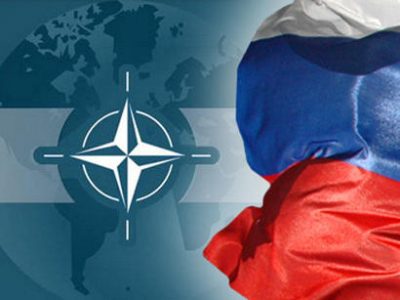NATO Expands Eastward to Russia
The 70 Years of NATO: From War to War

The Following text is Section 4 of
The 70 Years of NATO: From War to War,
by the Italian Committee No War No NATO
*
Documentation presented at the International Conference on the 70th Anniversary of NATO, Florence, April 7, 2019
In the course of the next two weeks, Global Research will publish the 16 sections of this important document, which will also be available as an E-book.
*
Contents
1. NATO is born from the Bomb
2. In the post-Cold War, NATO is renewed
3. NATO demolishes the Yugoslav state
4. NATO expands eastward to Russia
5. US and NATO attack Afghanistan and Iraq
6. NATO demolishes the Libyan state
7. The US/NATO war to demolish Syria
8. Israel and the Emirates in NATO
9. The US/NATO orchestration of the coup in Ukraine
10. US/NATO escalation in Europe
11. Italy, the aircraft carrier on the war front
12. US and NATO reject the UN treaty and deploy new nuclear weapons in Europe
13. US and NATO sink the INF Treaty
14. The Western American Empire plays the war card
15. The US/NATO planetary war system
16. Exiting the war system of NATO
***
1. In 1990, on the eve of the dissolution of the Warsaw Pact, US Secretary of State James Baker assured USSR President Mikhail Gorbachev that “NATO will not extend by a single inch to the east”. But in twenty years, after having demolished the Yugoslavian Federation, NATO extended from 16 to 30 countries, expanding more and more eastwards to Russia.
2. In 1999, it incorporated the first three countries of the former Warsaw Pact: Poland, the Czech Republic and Hungary. In 2004, it extended to other countries: Estonia, Latvia, Lithuania (formerly part of the USSR); Bulgaria, Romania, Slovakia (formerly part of the Warsaw Pact); Slovenia (formerly part of the Yugoslavian Federation). In 2009, it incorporated Albania (formerly a member of the Warsaw Pact) and Croatia (formerly part of the Yugoslavian Federation) and, in 2017, Montenegro; in 2019, it signed the protocol of accession of Northern Macedonia as the 30th member. Three other countries – Bosnia and Herzegovina (formerly part of the Yugoslavian Federation), Georgia and Ukraine (formerly part of the USSR) – are currently candidates for entry into NATO.
3. So Washington ties these countries not so much to the Alliance as directly to the US, strengthening its influence within the European Union. Of the ten Central and Eastern European countries entering NATO between 1999 and 2004, seven entered the European Union between 2004 and 2007. As the European Union expands to the East, the United States is effectively extending its control over Europe through NATO. Clearly, Washington’s strategic plan is revealed: to use the expansion of NATO to the East as a means of establishing relations of force even more favorable to the United States and, thus, further isolate the “old Europe” that could one day become autonomous.
4. Besides these, the expansion of NATO to the East has other implications. Incorporating not only the countries of the former Warsaw Pact but also the three Baltic republics that were once part of the USSR, NATO has reached the borders of the Russian Federation. Despite Washington’s assurances of its peaceful intentions, this constitutes a threat, even nuclear, to Russia.
*
Sections 5-16 of the 70 Years of NATO, From War to War, forthcoming on Global Research
This text was translated from the Italian document which was distributed to participants at the April 7 Conference. It does not include sources and references.
Note to readers: please click the share buttons below. Forward this article to your email lists. Crosspost on your blog site, internet forums. etc.

